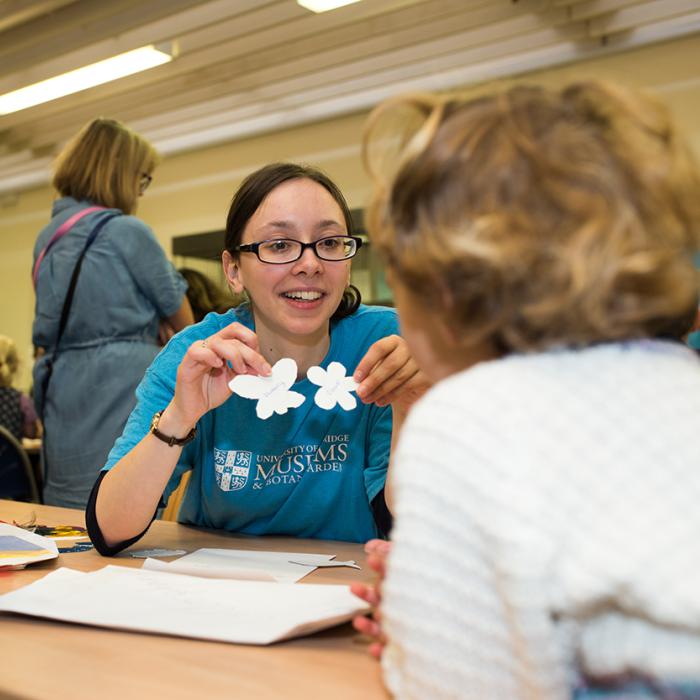Ever wondered how books are made? Before the invention of electricity and printing machines, books were handmade. Each book was unique and one of a kind. The text inside was handwritten too. This activity will introduce you to the craft of bookmaking.
You will make your own book using things you have at home! You get to decide how big or small it is, choose the book covers and paper colour. It is all up to you!
To Make Your Own Book you will need:
Cambridge University Library’s exhibition, Ghost Words: Reading the past, takes a closer look at some of the lost words scraped off parchment and hidden beneath newer text, in objects known as palimpsests. These ghost words, which remained undiscovered for centuries, are being uncovered using a modern digital technique known as spectral imaging.
With this activity, you can create and reveal your own hidden message using this DIY invisible ink! What will your secret message say? And who will get to read it?
Museums display objects together to tell a story about a time, place, person, or event. The Museum of Cambridge would love to see the objects in your home that tell your story.
Make a Museum on a Shelf by following the instructions on the downloadable activity sheet. Make a museum label for this and then share pictures of your display with the Museum of Cambridge.
Asteriornis maastrichtensis, affectionately known as the Wonderchicken, is among the most exciting bird fossils ever found. It has one of the best-preserved fossil bird skulls in the world, and gives us important insights into the evolutionary origins of modern birds.
It might not look very exciting but flint gravel has a story to tell of a warm chalky sea that covered a lot of England about 90 million years ago. That’s when dinosaur were around although they were not living in this particular sea. Sometimes flint filles the holes made by borrowing animals and sometimes, if we’re lucky it enclosed the remains of sea creatures meaning it is great place to look for fossils.
Scientists use all sorts of different ways to name the new plants, animals and fossils they find.
Two parts - Scientific names usually have two parts, just as people have a first name and a family name.
Latin or Ancient Greek - Often the names use words from Latin or Ancient Greek.
Find out more about the objects and habits that the Romans introduced to Britain.
In this activity you can find out about "Romanisation", the process through which Britain became more Roman.
Learn more about the niece of the Emperor Augustus, Antonia Minor. Using useful prompts and a planner, imagine a day in her life.
Which emperor's statue was thrown into a river in England? Which Roman invaded Britain first? Which emperor loved to sing? Find out in this activity.
See busts of Julius Caesar, Claudius, Nero and Hadrian from the Museum's collection and find out more about each one. Discover how they are connected to the history of Britain, and complete the activities to learn more.
You can use any fossil or dinosaur toys, just make sure they are clean. Use your own favourite biscuit recipe, or try this one.
You will need
- 115g butter
- 55g caster sugar
- few drops of vanilla extract
- 150g plain flour
- 25g cornflour
Mix the butter, sugar and vanilla extract until just evenly mixed. Stir in the flour and cornflour. Roll into a log, wrap in cling film and chill for 30 mins.

